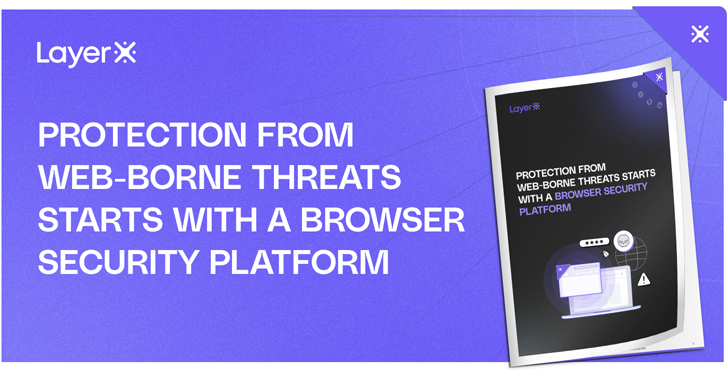Products You May Like
In the modern corporate IT environment, which relies on cloud connectivity, global connections and large volumes of data, the browser is now the most important work interface. The browser connects employees to managed resources, devices to the web, and the on-prem environment to the cloud one.
Yet, and probably unsurprisingly, this browser prominence has significantly increased the number of threats that adversaries target the browser with. Attackers are now leveraging the browser’s core functionality – rendering and executing web pages for users to access – to perform attacks. The browser is now an attack surface, as well as an attack vector for malicious access to corporate SaaS and web applications through account takeover and the use of compromised credentials.
To address this issue, a new guide was recently published (Download Here). It analyzes what a solution to these threats would look like. The guide, “Protection from web-borne threats starts with Browser Security Platform,” details the characteristics and the capabilities of a potential solution, and explains how it compares to other security solutions and why it is needed.
You Can’t Protect From Web-borne Risks From Outside the Browser
Commonly used security solutions were not natively built for protecting web sessions. For example:
- A network solution that analyzes web traffic to prevent access to malicious websites can’t detect over 40% of today’s adversaries-controlled web pages.
- CASB doesn’t have any monitoring and threat detection capabilities for unsanctioned applications and other non-corporate web destinations.
- Endpoint Protection Platform (EPP) doesn’t have visibility into the installment of browser extensions
Instead, protection to web-borne risk has to come from within the browser itself.
The Solution: Browser Security Platform
The guide calls for the recognition of an emerging security solution category, Browser Security Platform, which provides visibility into the browser’s application layer. This visibility is provided by continuously monitoring, analyzing, and applying real-time security controls on browser sessions from the browser itself.
Main characteristics of Browser Security Platform include:
- Browser-agnostic – the ability to equally support any browser it might encounter.
- Converged – the ability to analyze the post-decrypted web session, detect and prevent web-borne attacks in real time, prevent unintentional data loss, and enable IT governance.
- Comprehensive – addresses all aspects of the browser security: the browser itself, user activities and preventing attacker-controlled web pages.
- Deep web session inspection -real-time monitoring, risk analysis and proactive protection on the actual, post-decryption web session itself.
- User-centric – the maintenance of a seamless user experience and preservation of user privacy.
Browser Security Platform Core Capabilities
Following the detailed characteristics, the guide then lists the core capabilities of browser Security Platform. The main ones are:
- Secure browser configuration and attack surface reduction
- Zero trust in the browser
- 360° SaaS and web security
- Protection from browser-borne attacks, phishing webpages and malicious websites
- Protect unmanaged devices and BYOD
Adapting and responding to any future web-based risks.
The guide itself provides more granular details about each capability and how businesses can leverage them.
The Benefits of Browser Security Platform
Why should businesses look into a Browser Security Platform? The guide doesn’t shy away from tackling the hard questions. The writers know that CISOs have to justify budgets to the board and evangelize internally. Therefore, they list the main benefits Browser Security Platform provides for businesses.
The main ones are work flexibility for employees, consolidation of browser security controls, regained control of unmanaged resources, consistency of protection across all web and SaaS applications and support for a cloud-first strategy.
What is Not Browser Security Platform?
Finally, the guide provides insights into how to detect a Browser Security Platform. As an evolving category, the concept of Browser Security Platform is not always well understood by both security stakeholders and solution vendors alike.
Some examples of common mistakes regarding the nature of this new product category are perceiving it as a virtual machine for web-pages emulation, as an enhancer of endpoint protection solutions, or a solution that replaces commercial browsers. That is not the case, and the guide details why.
Main Takeaways from the Browser Security Platform Guide
The journey to protecting from web-borne risks and threats has started long ago. The question to explore today is where the most urgent gaps are. They might be the partial visibility across unsanctioned applications or the failure from preventing employees from accessing malicious web pages. There are a multitude of protection challenges for the browser.
The Browser Security Platform guide provides a directive for identifying how security stakeholders can address these gaps. The unique guide provides granular detail into how a solution would work and what stakeholders would stand to benefit.
Read the complete guide here.
